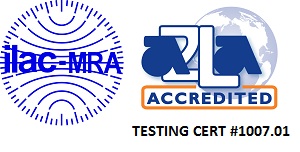EMISSIONS TESTING
Electromagnetic Interference Emissons
Electromagnetic interference (or EMI, also called radio frequency interference or RFI when in high frequency or radio frequency) is disturbance that affects an electrical circuit due to either electromagnetic induction or electromagnetic radiation emitted from an external source. The disturbance may interrupt, obstruct, or otherwise degrade or limit the effective performance of the circuit. These effects can range from a simple degradation of data to a total loss of data. The source may be any object, artificial or natural, that carries rapidly changing electrical currents, such as an electrical circuit.
Emissions testing include the measurement of potential radio frequency interference whether it is radiated or conducted. Limits are established, by the specific governments, to the interference levels based on the expected environments a particular device is used. The requirements for the different marketplaces a product is sold into will determine what kinds of tests and levels are required. The most common markets are North America for FCC and Industry Canada (IC), European Union for CE marking, Japan for VCCI, Korea for KCC marking, Taiwan for BSMI, and Australia and New Zealand for C-Tick marking.

